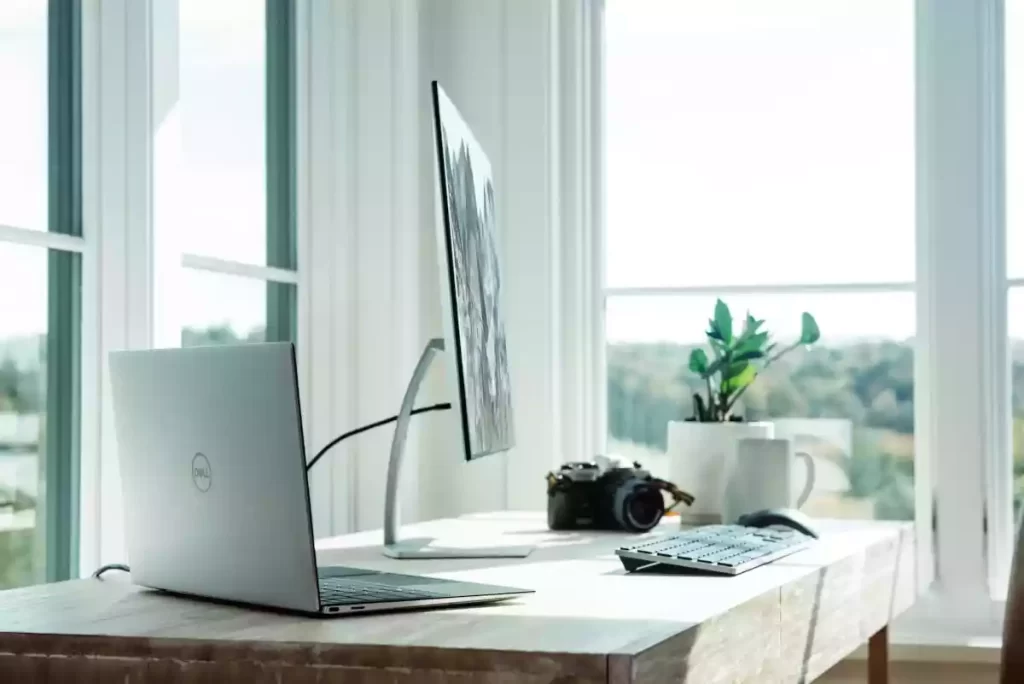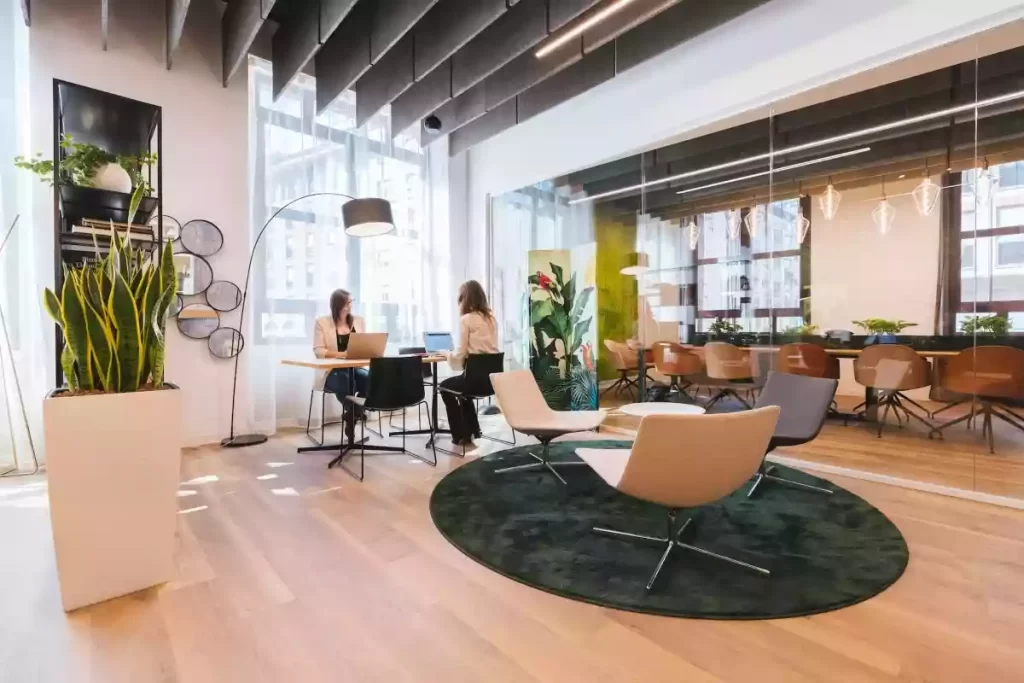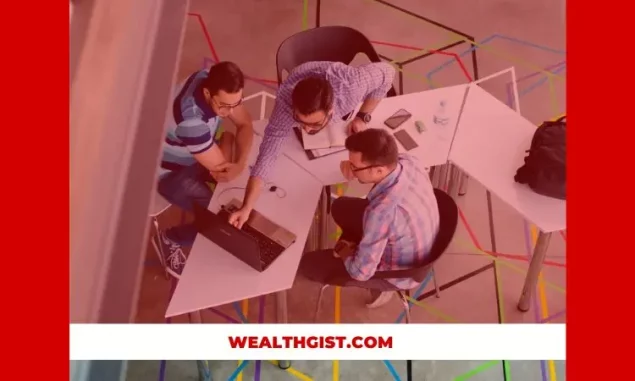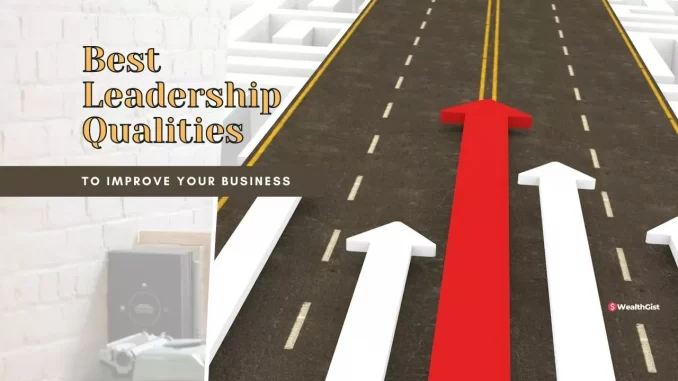As we begin to put the last two years behind us, it is almost time to return to the office and leave the dreaded Zoom calls in the past. Nevertheless, the long-awaited return to normal may not be to the pre-pandemic life we grew so accustomed to.
Be it for better or worse, the COVID-19 pandemic undoubtedly changed work culture forever. Thus, as employees gradually return to the workplace, its interior design will need to meet the needs of this new post-pandemic normal.
Namely, the office will still need to encourage productivity while also providing the comfort of the couch-turned-work-corner in our living rooms. Here are the office interior design Trends that might help with this transition.

1. Create an activity-based workspace
The cubical has long been an indisputable symbol of the workplace. However, as the work culture shifts, so does the ideal office design.
Thus, instead of a designated nine-to-five workspace, a contemporary office should offer flexibility above all else. In simple terms, this means creating activity-based workspaces, in which employees move freely depending on their tasks.
If a particular task requires concentration and focus, then an employee may move to a private booth. Conversely, if they lack inspiration, a shared desk or collaborative room may be just what they need.
The concept of an activity-based workspace works best in companies with diverse sectors, as then there truly is something for everyone – from standing desks to café areas.
2. Green up the office space!
It’s a well-known fact that the mere presence of plants and greenery significantly improves our mood. From enhancing our health to giving us that much-needed spark of creativity, there’s little that a potted plant can’t do.
In recent years, these benefits have managed to attract the attention of employers and interior designers alike. As a result, many companies have incorporated not only plants but other natural elements into their interior designs.
These often include modern yet organically shaped furniture, soothing views, and an abundance of natural light.
3. The comfort of home away from home
For a lot of people, their home became their office during the last two years and alongside the everyday nuisance of working from home, there was also a certain comfort to it.
Now, as we make the transition from home to the (actual) office, the workspace will need to capture this newly- established sense of comfort. A simple yet effective way of accomplishing this is by including comfortable elements such as sofas, carpets, and ping-pong tables to remind the employees of the home.
The feeling of security is especially important in metropolitan cities such as Hong Kong and London where a person can easily lose themselves in the corporate world. A couple of fashionable rugs from Hong Kong will ooze comfort into any workspace.
Although most think to place these items in the break room or cafeteria, giving the entire office a homey feel has been shown to increase both productivity and creativity at work. By taking short yet effective breaks, workers become more energized and in turn more productive as well.
4. Pay attention to the employees’ health
Be it at home or work, sitting for eight hours straight has never improved anyone’s health, and to keep your employees productive, you must also keep them healthy.
Therefore, in addition to changing the office layout, consider transforming the workstations into an ergonomic oasis.
One item that has been proven successful time and time again is ergonomic chairs. Alongside offering support for the lower back, these chairs are also easily adjustable to each person’s weight and height.
A more extreme yet equally beneficial approach would be exchanging office chairs for either standing desks or exercise ball chairs.

5. Knockdown (concrete) barriers
More often than not, corporate offices depicted on television tend to have glass barriers between working stations. Alongside it being beneficial for plotlines, glass barriers have proven to be crucial for enhancing office productivity.
For one, glass barriers provide a sense of transparency in the office. They also contribute to a sense of unity and equality among workers, as all employees are in the same undivided space.
In addition to these, glass also has the benefit of letting through natural light. Thus, the biggest office is no longer the only one with the sunlight, and as mentioned, its presence could be decisive for employees’ health and creativity.
6. Keep up with technological innovations
A technologically equipped office is a productive office. Thus, alongside innovations in interior design, make sure to pay attention to innovations in the tech world as well. Newer technologies will keep the office running smoothly and will surely take up less space than a decade-old copy machine.
By making sure the equipment is up-to-date, an employer is also minimizing the chance of delay and reducing unnecessary stress that workers may experience trying to restart an old printing machine.
7. Incorporate a sports center into the workspace
Although standing desks and exercise ball chairs may improve employees’ posture and circulation, a lot more can be done to keep them in good health. One idea that has gained traction in the post-pandemic world is incorporating a sports center into the workspace.
It may contain multiple machines and stationary bicycles or just a few yoga mats. Regardless of its size and equipment, a designated gym will offer a space to distress and let the tension of the day go. It will also show the employees that the company cares about both their mental and physical health.
Regardless of the trend a company chooses, a change in both its interior design and work culture is inevitable. An office can no longer be just a dull cubical we enter for eight hours a day.
Instead, it must be a safe space that will both enhance productivity and ooze comfort. In the end, one thing is certain; to remain competitive, companies will need to start rethinking their ways and with that, their interior designs as well.
Co-Authored with Brigitte Evans
I’m an experienced media executive and Entrepreneur. A complex problem solver and deep thinker capable of leading teams to meet targeted goals. I’m passionate about Digital Marketing | Blogging | SEO and Content Optimization. A tech-savvy With over 10years of experience in the industry, helping other Startups and business fulfil their goals is my commitment. My passion is assisting individuals in finding their talent, and my job is to assist organizations in realizing their full potential.









